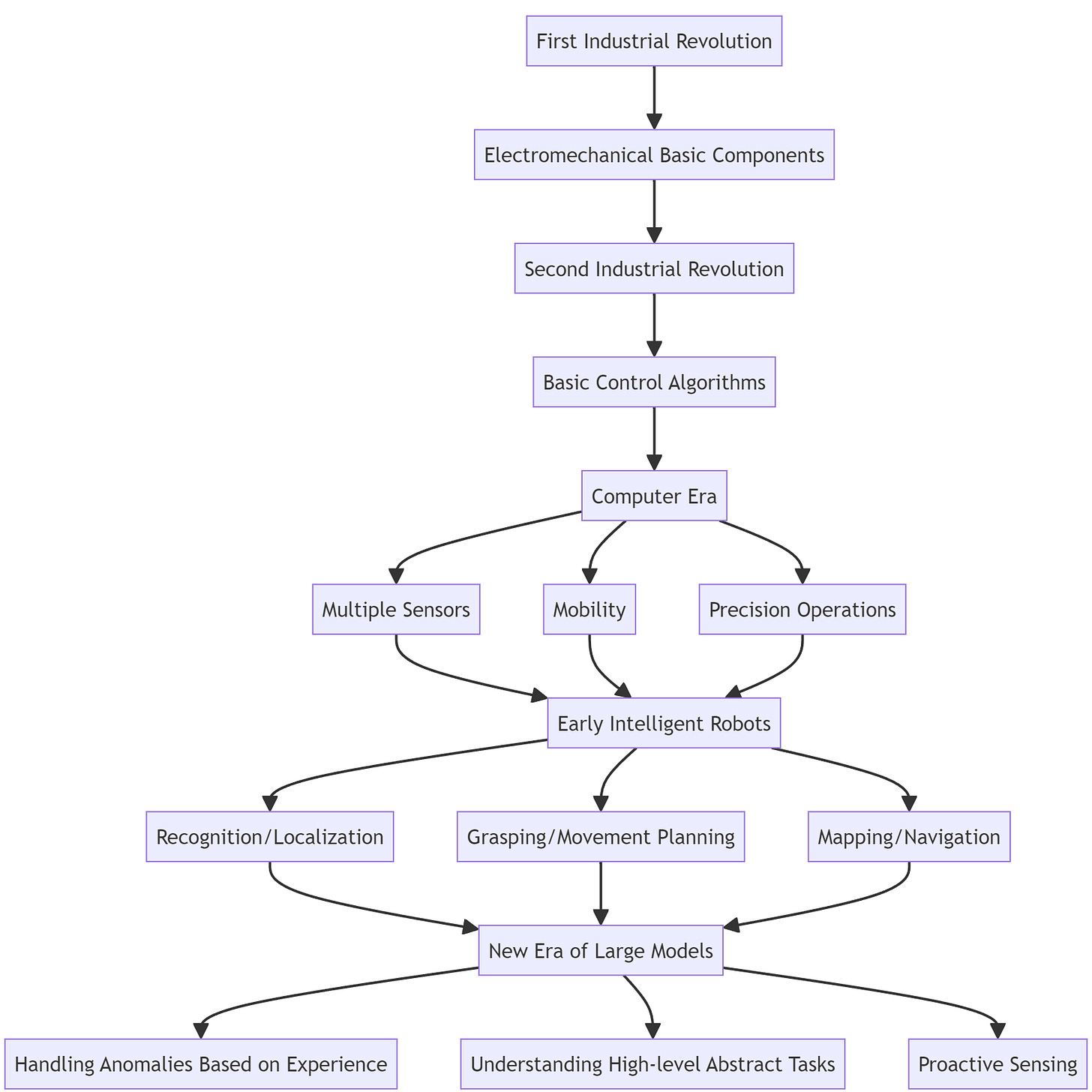How Large AI Models Are Revolutionizing Humanoid Robots
Explore how large language models are revolutionizing humanoid robots, enhancing task understanding, and driving future breakthroughs.
Welcome to the "Practical Application of AI Large Language Model Systems" Series
In this lesson, we'll talk about robots. There are many types of robots, such as chatbots like ChatGPT, customer service bots, even vacuum robots, and painting robots. However, today, we're focusing on humanoid robots.
Robot evolution is similar to human evolution. First, a robot needs to stand and walk straight without falling—this is like how the human brain's cerebellum works. Then, robots developed speech and image recognition, which correspond to specific areas of the human brain. Now, with the advent of large models, robots are evolving toward the capabilities of the prefrontal cortex, enabling them to have some "basic intelligence."
Some say mechanical progress equals the advancement of control. For example, the first industrial revolution introduced basic components like cylinders. In the second industrial revolution, basic control and automation emerged, allowing humans to control machines with machines. In the computer revolution, PLCs (Programmable Logic Controllers) allowed computers to control machines. Later, 3D vision AI was used to control machines, and now, large models are being used to control machines.
Each generation of technology doesn’t replace the previous one but rather complements it. For example, computers didn’t make mechanical control obsolete; instead, they empowered it, leading to more powerful and versatile machines. Large models can gradually replace scenarios previously controlled by humans.





